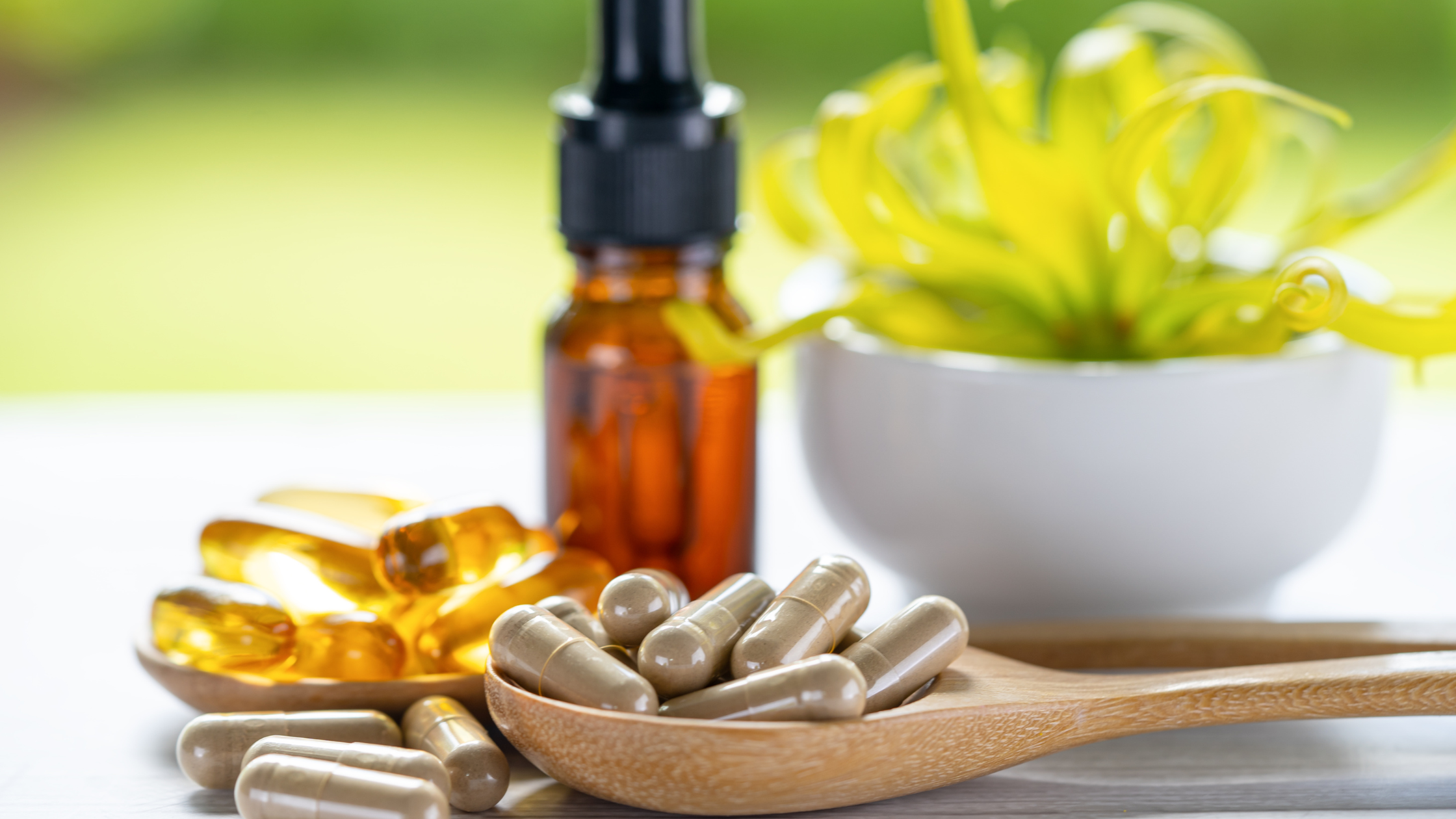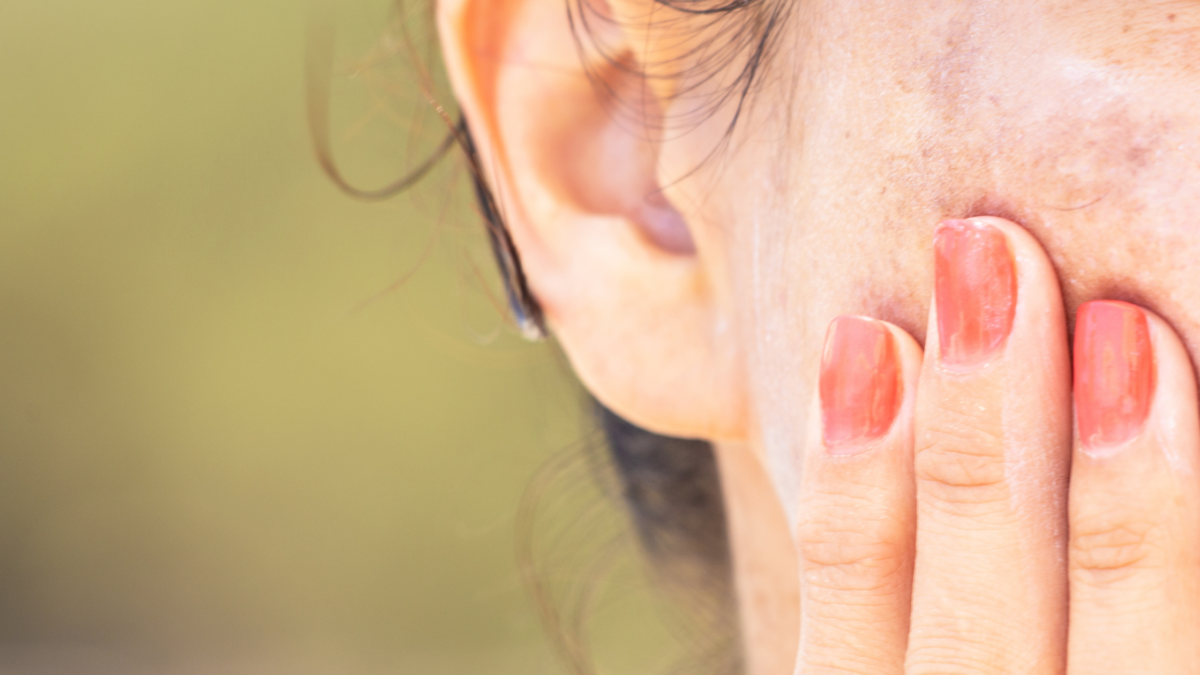


Medically Reviewed By Margaret Etudo. Written By The Vitamins For Woman Team.
Nail discolouration can signal fungal infections, trauma, or severe health conditions. Learn the causes, treatments, and when to seek medical help.

Suppose you’ve noticed changes in the colour of your nails. In that case, it’s not always just about looks—nail discolouration can sometimes be your body’s way of telling you something’s off, whether it’s a fungal infection, an old injury, or even a sign you’re low on specific nutrients.
Whether you’re dealing with yellow nails, white spots, or dark streaks under the nail, changes in nail colour often signal that something is off.
For adults concerned about nail health or beauty enthusiasts looking for ways to whiten and strengthen their nails naturally, it’s essential to understand the root causes and the best treatments available.
This article explores the common causes of nail discolouration, how to tell fungal vs non-fungal nail discolouration, effective medical and natural treatments, and red flags that might indicate a more serious condition like melanoma.
You’ll also find answers to frequently asked questions and tips on restoring healthy, clear nails.
Discoloration of the nails can appear as yellowing, white spots, dark lines, or even green or blue hues. Here are the most common causes:
Fungal nail infections, medically known as onychomycosis, are one of the leading causes of yellow nails. Fungi thrive in warm, moist environments; the toenails are especially susceptible. The infection typically begins at the edge of the nail and can spread deeper into the nail bed, causing:
People who frequently use communal showers, wear sweaty shoes for long hours or have compromised immune systems are at higher risk. If left untreated, fungal infections can become chronic and complex to resolve.
Injuries to the nail, such as slamming your finger in a door or dropping something heavy on your toe, can lead to subungual hematomas, which appear as black, blue, or purplish spots under the nail. These are essentially bruises caused by bleeding beneath the nail plate. While most will grow out with the nail, persistent or growing dark spots may require medical evaluation to rule out other causes, including melanoma.
In some cases, repeated trauma (such as from tight shoes or running) can also cause nail thickening or permanent discolouration.
For fungal nail infections and persistent discolouration, medical treatment is often necessary. The best treatment for yellow nails caused by fungus typically includes:
If the discolouration is due to trauma, treatment typically involves trimming the nail carefully and letting it grow out. In cases of significant pain or persistent discolouration, a doctor may need to drain the hematoma or assess for nail matrix damage.
Many beauty enthusiasts and those wary of pharmaceuticals opt for natural remedies to lighten discoloured nails or prevent fungal overgrowth. While these options are less potent than prescription treatments, they may offer mild improvement and help prevent recurrence:
These remedies are most effective for surface stains or mild fungal issues. Deep discolouration or long-standing infections still require medical evaluation.
While most nail discolouration is harmless or treatable, specific changes could indicate serious health concerns.
One of the most concerning causes of dark streaks under the nail is subungual melanoma, a rare but aggressive form of skin cancer. This condition often starts as a brown or black vertical line, usually under the thumb or big toe. According to an article on melanonychia, red flags include:
If you notice any of these signs, especially without a clear cause, consult a dermatologist immediately. Early diagnosis significantly improves the prognosis.
Other severe conditions associated with nail changes include:
Yes. Frequent use of dark nail polish without a base coat can stain the nail plate, leading to temporary yellowing. This process is not harmful and usually resolves as the nail grows out.
Always use a clear base coat to prevent polish-related discolouration and give nails time to breathe between applications for good nail hydration.
It depends on the underlying cause. For polish stains, it may take 4–6 weeks for the nail to grow out. For fungal infections, treatment may last 3–6 months or longer, and complete nail normalization can take up to a year, especially for toenails, which grow more slowly than fingernails.
By consuming biotin-rich foods, supporting nail health from within may help speed up regrowth and strengthen the new nail.
In most cases, white spots on nails (leukonychia) are harmless and caused by minor trauma to the nail matrix. White spots or patches on your nails often show up a few weeks after you accidentally bump or bang your finger—and in many cases, they grow out on their own. But if the white discolouration sticks around or covers more of the nail, it could be your body’s signalling something else, like a zinc or calcium deficiency, an allergic reaction to nail polish or remover, or even a fungal infection.
If the spots are numerous, spreading, or accompanied by other symptoms, seek medical advice to rule out systemic causes.
Discolouration in your nails might seem harmless initially, but it’s often your body’s way of telling you something isn’t quite right. Whether it’s from a mild fungal infection, repeated bumps, or a sign of something more serious, it’s worth paying attention to any changes in colour.
Suppose you notice yellow nails, dark streaks, or persistent white spots. In that case, it’s worth investigating the cause and exploring the right treatment options—antifungal medication, laser therapy, or natural home remedies like tea tree oil.
Maintaining nail health through proper hygiene, limiting polish use, and consuming a nutrient-rich diet can help prevent future problems. And remember, not all discolouration is cosmetic—consult a healthcare provider when in doubt.
If you want to whiten nails naturally and strengthen them from within, start by evaluating your nail care habits and diet. The proper care routine can restore your nails’ appearance and reveal more about your overall health.
Leung AK, Lam JM, Leong KF, et al. Onychomycosis: an updated review. Inflammation & Allergy Drug Targets. 2020;14(1):32.
Zaias N, Escovar SX, Zaiac MN. Finger and toenail onycholysis. J Eur Acad Dermatol Venereol. 2015;29(5):848-853.
Pingel C, McDowell C. Subungual hematoma drainage. In: StatPearls. StatPearls Publishing; 2025.
Ahmed B, Qadir MI, Ghafoor S. Malignant melanoma: skin cancer-diagnosis, prevention, and treatment. Crit Rev Eukaryot Gene Expr. 2020;30(4):291-297.
Axler E, Lipner SR. Antifungal selection for the treatment of onychomycosis: patient considerations and outcomes. Infection and Drug Resistance. 2024;17:819.
Baran R. Common‐sense advice for the treatment of selected nail disorders. Acad Dermatol Venereol. 2001;15(2):97-102.
Cohen PR. Trauma-associated pseudo-hutchinson sign: an autobiographical case report emphasizing conditions, pseudo-conditions, and pseudo-pseudo-conditions. Cureus. 2024;16(12):e76474.
Iorizzo M, Starace M, Pasch MC. Leukonychia: what can white nails tell us? American Journal of Clinical Dermatology. 2022;23(2):177.
NHS: Nail problems. nhs.uk.

medically reviewed by margaret etudo, BPharm. written by the vitamins for woman team.